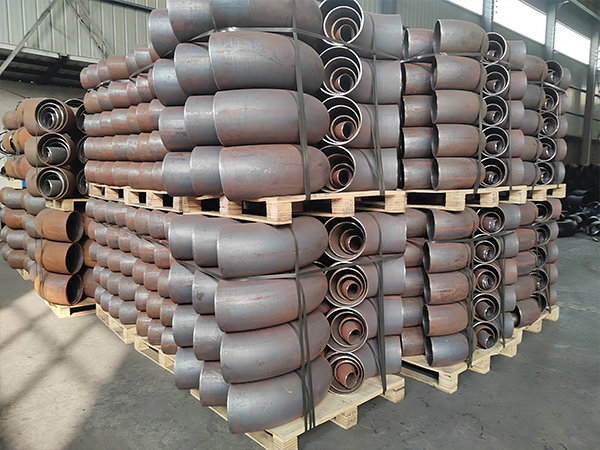ProductsDetails

Wear-resistant overlay pipe
Weld overlay wear-resistant steel pipes not only extend service life but also maintain stable performance under complex working conditions.This article provides a detailed overview of the technical characteristics,applications,manufacturing processes,and future development trends of weld overlay wear-resistant steel pipes.
The growing demand for wear-resistant pipes has driven manufacturers to pursue more efficient surface strengthening methods.Weld overlay technology is one of the most effective approaches.By depositing a high-hardness,wear-resistant layer on the pipe surface,this method significantly improves resistance to frictional damage.In industries such as mining,coal,and material transportation,where operating environments are extremely harsh,weld overlay provides reliable protection for pipes.
I.Industrial Importance
Steel pipes serve as essential transport and support materials in industrial production.With evolving processes,higher performance—especially in wear resistance—is required.Weld overlay wear-resistant seamless steel pipes,as a specialized type,are widely used in mining,metallurgy,chemical,and machinery manufacturing due to their excellent wear performance.
II.Manufacturing Technology of Weld Overlay Wear-Resistant Seamless Pipes
Principle of Weld Overlay
Weld overlay involves depositing wear-resistant materials layer by layer onto the pipe surface using welding equipment.Common overlay materials include cast iron,wear-resistant alloys,and ceramic-particle composites.These materials provide high hardness and strong wear resistance,effectively resisting friction and impact.
Material Selection
Different service conditions require different overlay materials.For example,ceramic composites perform better under high-impact conditions,while wear-resistant alloys are more suitable for high-friction environments.Material bonding strength,thermal expansion coefficient,and compatibility with the steel substrate must also be considered.
Process Control
Welding parameters—such as current,voltage,travel speed,and shielding gas flow—must be precisely controlled to ensure coating quality.Incorrect parameters can lead to cracking,delamination,or uneven hardness.Appropriate heat treatment further improves bonding and wear performance.
Post-treatment
After overlaying,stress relief,grinding,and inspection are typically required.These processes ensure smoothness,strong bonding,and crack-free layers,directly influencing service life and performance.
III.Performance Characteristics
Improved Wear Resistance
The hard overlay layer allows pipes to withstand high friction and impact during long-term operation,greatly improving wear resistance.This is especially valuable in mining and excavation,reducing maintenance and replacement costs.
Impact Resistance
The overlay not only increases hardness but also absorbs part of the impact energy,enhancing pipe durability under harsh operating conditions with sudden loads.
Extended Service Life
Properly designed overlays(thickness and material)significantly extend pipe lifespan,minimizing downtime and failures due to wear,lowering overall operational costs.
Corrosion Resistance
Some overlay materials provide additional corrosion resistance,making these pipes suitable for chemical environments.
IV.Application Fields
Mining Industry
Pipes for ore transport face severe friction and impact.Weld overlay wear-resistant pipes extend equipment service cycles,reduce maintenance,and ensure continuous production.
Metallurgy Industry
In high-temperature,high-load environments,wear resistance is crucial.Overlay coatings enhance resistance to thermal wear,meeting requirements in smelting and rolling processes.
Chemical Industry
In corrosive media,overlays not only improve wear resistance but also enhance corrosion protection.
Machinery Manufacturing
In lubrication and transmission systems,wear-resistant seamless pipes provide stable performance,reduce part replacement frequency,and improve efficiency.
V.Challenges and Future Development
Technical Challenges
Ensuring uniformity and bonding strength of overlays is a key challenge.Optimizing heat treatment and reducing costs while improving efficiency remain priorities.
Material Innovation
New wear-resistant materials and composites will further improve hardness and durability,enabling adaptation to more complex conditions.
Smart Manufacturing
Automation and intelligent welding systems can achieve more precise parameter control,ensuring consistency and quality while lowering costs and expanding applications.
Conclusion
Weld overlay wear-resistant pipes demonstrate unique advantages and significant value across multiple industries.With proper material selection and controlled processing,their wear resistance and service life can be greatly improved.As technology progresses,these pipes will achieve even greater stability and broader application.For industrial operators,mastering the relevant technologies is essential to enhance equipment efficiency,reduce costs,and support sustainable industry development.
 Recommended News
Recommended News
-
Application of Plastic-Lined Pipes in High-Sand Wastewater Transport
2025-09-20 09:37:52
-
Common Causes of Failure in PTFE-Lined Pipes
2025-09-18 09:36:46
-
A Scientific Guide to Selecting Overlay Welded Wear-Resistant Pipes
2025-09-16 09:32:21
-
Key Installation Points for Ceramic Tile-Lined Pipes
2025-09-16 09:24:42
-
Safe Application of PTFE-Lined Pipes: A Practical Guide
2025-09-16 09:21:11
 Contact us
Contact us
—— Contact:Manager
—— Tel:+86 19833790008
—— Email:772878082@qq.com
—— Url:http://www.yuanzhongpipeline.com
—— Address:Pucheng Development Zone, Yanshan County, Hebei Province









